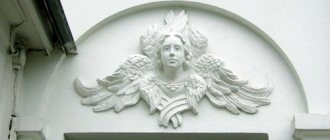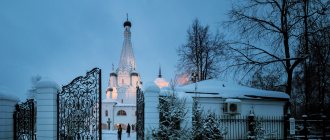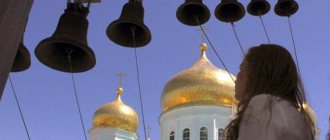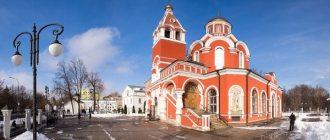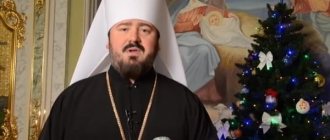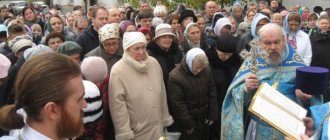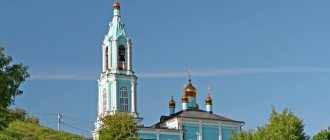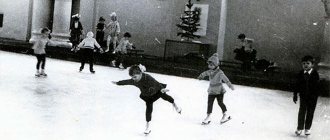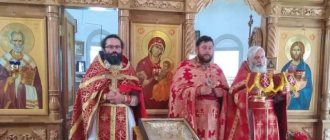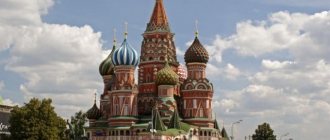Mir
Russia Sevastopol Intercession Cathedral (Sevastopol) Map loading in progress...
{"format":"leaflet","minzoom":false,"maxzoom":false,"limit":50,"offset":0,"link":"all","sort":[""], "order":[],"headers":"show","mainlabel":"","intro":"","outro":"","searchlabel":"\u2026 \u0441\u043b\u0435\ u0434\u0443\u044e\u0449\u0438\u0435 \u0440\u0435\u0437\u0443\u043b\u044c\u0442\u0430\u0442\u044b","default":"","import-annotation":false,"width ":"auto","height":"350px","centre":{"text":"","title":"""link":"""lat":44.6054222012846963707488612271845340728759765625,"lon": 33.52209331717929075011852546595036983489990234375,"icon":""},"title":"","label":"","icon":"","lines":[],"polygons":[],"circles":[ ],"rectangles":[],"copycoords":false,"static":false,"zoom":8,"defzoom":14,"layers":["OpenStreetMap"],"image layers":[] ,"overlays":[],"resizable":false,"fullscreen":true,"scrollwheelzoom":true,"cluster":false,"clustermaxzoom":9,"clusterzoomonclick":true,"clustermaxradius":80, "clusterspiderfy":true,"geojson":"","clicktarget":"","showtitle":true,"hidenamespace":false,"template":"","userparam":"","activeicon": "","pagelabel":false,"ajaxcoordproperty":"","ajaxquery":"","locations":[{"text":"\u003Cb\u003E\u003Ca href=\"/palomnik/%D0% 9F%D0%BE%D0%BA%D1%80%D0%BE%D0%B2%D1%81%D0%BA%D0%B8%D0%B9_%D1%81%D0%BE%D0%B1% D0%BE%D1%80_(%D0%A1%D0%B5%D0%B2%D0%B0%D1%81%D1%82%D0%BE%D0%BF%D0%BE%D0%BB%D1 %8C)\» title=\»\u041f\u043e\u043a\u0440\u043e\u0432\u0441\u043a\u0438\u0439 \u0441\u043e\u0431\u043e\u0440 (\u0421\u0435\u0432\u04 30\u0441 \u0442\u043e\u043f\u043e\u043b\u044c)\»\u003E\u041f\u043e\u043a\u0440\u043e\u0432\u0441\u043a\u0438\u0439 \u0441\u043e\u043 1\u043e\u0440 (\u0421 \ u0435 \ u0432 \ u0430 \ u0441 \ u04442 \ u043e \ u043f \ u043e \ u043b \ u044c) \ u003c/a \ u003e \ u003c/b \ u003e \ u003chr/\ u003e \ u003CA HRREAH HREMA HREAFA \ "/Palomnik/%d0% A1%D0%B2%D0%BE%D0%B9%D1%81%D1%82%D0%B2%D0%BE:%D0%90%D0%BD%D0%BD%D0%BE%D1%82 %D0%B0%D1%86%D0%B8%D1%8F\" title=\"\u0421\u0432\u043e\u0439\u0441\u0442\u0432\u043e:\u0410\u043d\u043d\u043e\u0442\ u0430\u0446\u0438\u044f\»\u003E\u0410\u043d\u043d\u043e\u0442\u0430\u0446\u0438\u044f\u003C/a\u003E: \u043f\u0440\u0430\u043 2\u043e\u0441\u043b \u0430\u0432\u043d\u044b\u0439 \u0445\u0440\u0430\u043c \u0421\u0435\u0432\u0430\u0441\u0442\u043e\u043f\u043e\u043b\u044c\ u0441\u043a\u043e\u0433\u043e \u0431\u043b\u0430\u0433\u043e\u0447\u0438\u043d\u0438\u044f \u0421\u0438\u043c\u0444\u0435\u0440\u043e\u043f\u043e\u043b\u 044c\u0441\u043a\u043e\u0439 \u0435\u043f\u0430\u0440\u0445\u0438\u0438 \u043f\u0440\u0430\u0432\u043e\u0441\u043b\u0430\u0432\u043d\u043e\u0439 \u0446\ u0435\u0440\u043a\u0432\u0438 . 1905 1905 \u043a\u0442\u0443 \u0430\u0440\ u0445\u0438\u0442\u0435\u043a\u0442\u043e\u0440\u0430\u0412. \u0410. \u0424\u0435\u043b\u044c\u0434\u043c\u0430\u043d\u0430.","title":"\u041f\u043e\u043a\u0440\u043e\u0432\u0441\u043a\u0438\u0439 \ u0441\u043e \u0431\u043e\u0440 (\u0421\u0435\u0432\u0430\u0441\u0442\u043e\u043f\u043e\u043b\u044c)","link":"""lat":44.60542220128500190412523 807026445865631103515625,"lon":33.5220933171789994275968638248741626739501953125 ,"icon":""}],,"imageLayers":[]}
44.605246; 33.521964
Russia, Sevastopol, Bolshaya Morskaya street, 36
Sevastopol
Russia
Telephone:
+7 8692 545484 (shop)
Intercession Cathedral
- Orthodox church of the Sevastopol deanery of the Simferopol diocese of the Orthodox Church. Built in 1905 according to the design of architect V. A. Feldman.
History[edit]
The construction of the Cathedral of the Intercession of the Holy Virgin began in 1892. The author of the project was the architect Valentin Feldman. The prototype of the building was the stone tented temples of the 16th century. By 1905 the work was completed. On February 26, 1905, the rite of consecration of the temple was performed. The cathedral was consecrated by His Grace Nicholas, Bishop of Tauride and Simferopol, in the co-service of the rector of the Chersonesos Monastery, His Grace Innocent, and the clergy of all the churches of Sevastopol. On April 3, 1905, His Grace Bishop Innocent performed the rite of consecration of the left side chapel of the church in the name of the Holy Great Martyr Panteleimon. In October 1905, the Holy Synod elevated the Church of the Intercession on Bolshaya Morskaya to the level of the city cathedral of Sevastopol.
The cathedral building is designed like a basilica. The temple is crowned with five domes. The main one, with an area of 81.2 sq.m., is decorated with a pointed vault with four twelve-sided turrets. The turrets have a tent roof. Like the domes, they are topped with onion-shaped domes.
In the western part there is a belfry, topped with a faceted high tent. The bell tower is connected to the main building of the temple by a continuation of the central volume, perpendicular to the street.
The architectural elements of the cathedral's decoration are made in the Old Russian style. These are wide stucco friezes of massive cornices, semicircular kokoshniks.
Inkerman stone was used to build the walls of the cathedral. Individual parts and corners are lined with Krymbal stone.
The entrance to the temple is made in the form of a closed gallery with a porch. A separate entrance in the form of a porch is also located from the northern aisle.
In May 1916, the remains of Lieutenant Pyotr Schmidt, sailors of the cruiser "Ochakov" Sergei Chastnik, Alexander Gladkov, Nikita Antonenko were temporarily placed in the crypts of the lower church. In November 1923, a solemn ceremony for the reburial of the remains of revolutionaries took place at the city cemetery of Kommunards.
During the Second World War, the temple building, like the entire center of Sevastopol, suffered from bombing. The southern aisle was destroyed by a direct hit from a shell. After the war, the building was partially restored.
Divine services in the Intercession Cathedral took place until 1962. In 1962-1969. The Sevastopol archive and sports hall were located in the temple building. In 1969, the temple was completely given over to the archive. Soon the crosses and domes were removed from him.
The return of the Intercession Cathedral building to the Church took place in the early 90s. In 1992, the northern aisle of the cathedral was transferred to the community of believers and consecrated in the name of the Holy Great Martyr Panteleimon. At the beginning of 1994, the entire building was given to the Church.
By the 100th anniversary of the temple, the restoration of the southern aisle was completed, the facade was restored, the domes and crosses were covered with gilding.
Today the Cathedral of the Intercession of the Blessed Virgin Mary is one of the centers of spiritual life in Sevastopol.
Story
In 1892, the architect Feldman decided to erect a building that would satisfy all the demands of the demanding citizens who filled Sevastopol at that time. It took only a few months to create the project for the Cathedral of the Intercession of the Blessed Virgin Mary, however, it was rebuilt only at the beginning of the last century - the idea required considerable funds. In 1905 it was consecrated. In those years, the temple was the subject of many conversations - it had six thrones, as well as an unrivaled height for the surrounding neighborhoods.
Already 12 years later, the Bolsheviks turned the cathedral into a crypt. The shrine became the site of the solemn burial of the instigators of the revolutionary mutiny in the Black Sea Fleet - Lieutenant Schmidt and several sailors. After two years, the remains of the heroes were placed in the Communards cemetery, and the building itself first became a club, and then a hostel. The incredible beauty of the painting, which was once done by famous Russian icon painters, could not be preserved in its original form.
Intercession Cathedral in Sevastopol: panorama on Google Maps
The outbreak of the Great Patriotic War placed the temple on one of the lines of defense - its southern part was almost completely destroyed by Hitler's airstrike. This did not stop true believers from continuing to perform their prayers here - even being dilapidated, the building was increasingly filled with a sacred aura.
The shrine was partially restored in the 1940s; the upper church of the cathedral was then restored by the rector John Krashanovsky. Thanks to his efforts, the building was restored to its original appearance and was consecrated in 1948. Until 1962, services were held in the temple, after which a gym and the city archive were located here.
In 1992, the community of believers received the northern aisle of the shrine into their possession, and in April of the same year it was consecrated in the name of the Holy Great Martyr Panteleimon. Two years later, the believers received the entire building.
© Derevyagin Igor
Pilgrim[edit]
Schedule of services:
Divine services in the temple are held daily.
17:00 — Evening worship. Sacrament of Confession.
7:00 - Morning service: hours, Divine Liturgy.
A prayer service and a memorial service are held daily.
On Fridays, a prayer service with an akathist to the Most Holy Theotokos is performed in front of the “All-Tsarina” icon at 16:00.
On Sundays, the Divine Liturgy begins at 7:00.
ATTENTION: On Sundays there will be ONE Divine Liturgy, at 7:00.
History of the deanery
November 16, 1859
on this day the Simferopol and Crimean diocese was founded
The Simferopol and Crimean diocese (formerly Tauride) was founded under Emperor Alexander II on November 16, 1859.
Thus, Crimea became the center of Orthodoxy.
There were also historical prerequisites for this. Indeed, on the territory of the peninsula, in Chersonesus, Prince Vladimir converted to Christianity in 988.
Previously, Andrew the First-Called and Cyril and Methodius preached here. The active development of Christianity in Crimea took place between the 4th and 9th centuries. At this time, 5 dioceses are active on the peninsula.
A landmark event for the development of Orthodoxy in the Crimea was the founding of the Tauride diocese in 1859.
Ten years later, numerous theological schools for men and women were already functioning in Crimea, and about 100 new parishes were founded.
Another 4 years later, in 1873, the Tauride Theological Seminary was opened, which over 47 years of work graduated a large number of priests.
Temples of the Sevastopol Deanery
There are several dozen churches of the Sevastopol deanery.
More detailed information about each of them is provided by the official website of the Sevastopol deanery - https://hersones.org/, where you can find out a brief history of each church, who is the rector, schedule of services, address, contact information, opening hours, etc.
Here we list some of the churches of Sevastopol that belong to the deanery.
St. Vladimir's Cathedral in Chersonesos
Exterior view of St. Vladimir's Cathedral in Chersonesos
Interior decoration of St. Vladimir's Cathedral in Chersonesos
Year of foundation: 1861
Schedule: daily from 7:00 until the end of the evening service, 7:30 - liturgy, 17:00 - service.
- Sat. 8:00 - liturgy;
- 15:45 - all-night vigil;
- Sun. 7:50 - water prayer service;
- 8:20 - liturgy;
- 17:00 - worship service.
Rector: Archpriest Sergius Khalyuta.
The cathedral is located in Chersonesus.
It was in this place that Christianity was adopted by Prince Vladimir in 988. The Cathedral dates back to 1861 during the reign of Alexander II, who laid the first stone.
The architect of the cathedral was David Grimm. The cathedral looks majestic and monumental both outside and inside.
Church of St. Luke of Crimea
Church of St. Luke of Crimea in Sevastopol
Year of foundation: 2012
Schedule: daily from 8:00 to 17:00.
- Fri., Sat. 16:00 - divine service;
- Sat. 9:00 - Divine Liturgy;
- Sun. 9:00 - Liturgy.
Rector: Archpriest Andrey Ragulin.
This temple appeared relatively recently in the name of Archbishop Luke of Crimea.
Construction began in June 2012 under the leadership of Sergius Khalyuta, as well as philanthropists Sergei Zaborsky and Pavel Lebedev. The temple was located on the territory of the 1st city hospital.
Temple in the name of the Holy Martyrs Alexander Peresvet and Andrei Oslyabi
Temple in the name of the Holy Martyrs Alexander Peresvet and Andrei Oslyabi
Year of foundation: 2021
Schedule: daily from 7:00 to 17:00, 10:30 - reading of akathists.
- Thurs. — Water Blessing Prayer;
- Sat. 15:00 - all-night vigil;
- Sun. 9:00 - Liturgy.
Rector: Priest Alexander Reva.
The church was erected with the assistance of Andrei Kondrashov in 2021. He is also a television journalist, author of the film “Crimea. The path to the homeland."
The beginning of the temple was laid in July 2021, and in September of the same year, work on the construction of the temple was completed. Andrei Kondrashov, speaking about the construction of the temple, said that everything happened easily, funds were found without problems. The architect of the temple was Ruslan Fedotov. The temple was located on Yukharinaya Balka.
This place has a warlike history. After all, it was here that Soviet soldiers fought against Germany in 1942.
Temple of the Seven Hieromartyrs, who served as bishops in Chersonesos
Temple of the Seven Hieromartyrs, who served as bishops in Chersonesos
Interior decoration of the Church of the Seven Hieromartyrs in Chersonesos, who became bishops.
Year of foundation: 1850s.
Schedule: daily from 7:00 to 17:00.
Sun. 6:30 – liturgy.
Rector: Archpriest Sergius Khalyuta.
The church was erected in the 50s of the 19th century.
The hostilities of the Crimean War led to the destruction of the temple. At this time, a French battery and gunpowder warehouses were located here. In 1857 the church was restored with a wooden facade, and in 1881 with a stone one.
By leaving a comment, you accept the user agreement
Outstanding ministers of the Crimean diocese - Archbishops Luka, Gury and Dimitry
Among the ministers of the diocese there were truly outstanding personalities who deserve special attention.
Archbishop Luke. In addition to theological education, he also had a higher education, was a professor-surgeon, was an active doctor, and was a candidate for the Stalin Prize.
1946
from this year Luke was appointed archbishop in the Tauride diocese
Since 1946 he was archbishop in the Tauride diocese. In 1995, he was canonized by the Synod of the Ukrainian Orthodox Church.
In 1997, a monument was unveiled in his honor. The relics of the holy bishop are kept in the Holy Trinity Monastery in Simferopol, the capital of Crimea.
Another important figure in the history of the Crimean diocese was Archbishop Gury.
Real name: Grigory Platonovich Karpov. Being the head of the Tauride Department, he was active for 14 years.
Under him, the Theological Seminary and the Theological School for Men were financed and built. Under him, the Alexander Nevsky Cathedral was reconstructed. Under him, the Tauride Theological Seminary was founded, and the magazine “Tavriche Diocesan Gazette” was published.
Archbishop Gury died in 1882, and in 1929 his body was transferred to the Simferopol cemetery of the Church of All Saints.
An interesting fact is that there is a certified fact that 47 years after burial, Guria’s body remained incorrupt.
2008
this year Bishop Gury was canonized
Archbishop Dimitri also performed many good deeds for the fate of the Crimean diocese. His administration of the diocese occurred during the First World War. At the beginning of the war he was a priest at the Black Sea squadron.
Also during the war years he took part in the work of the Provisional Higher Church Administration in the South of Russia. He spent his dying years in the Kiev-Pechersk Lavra.
